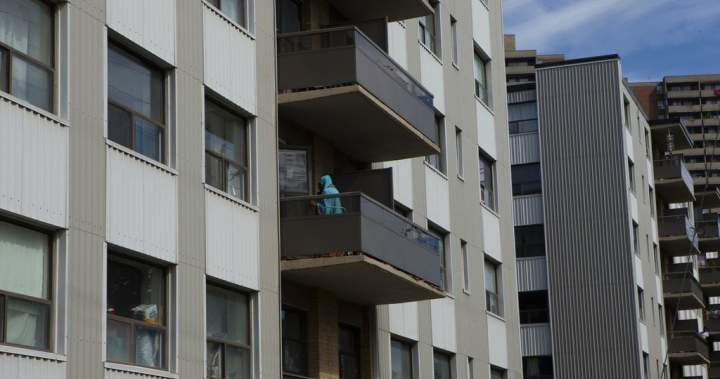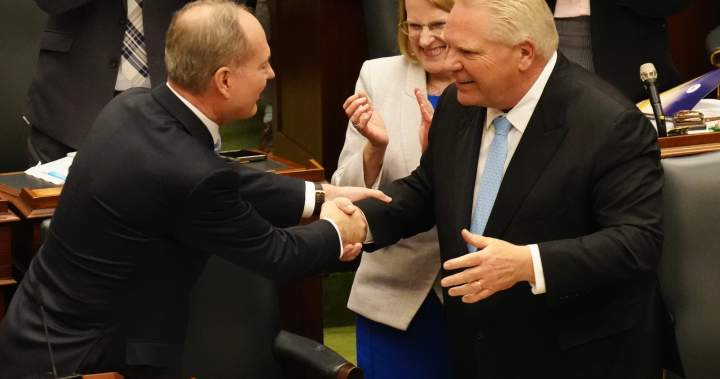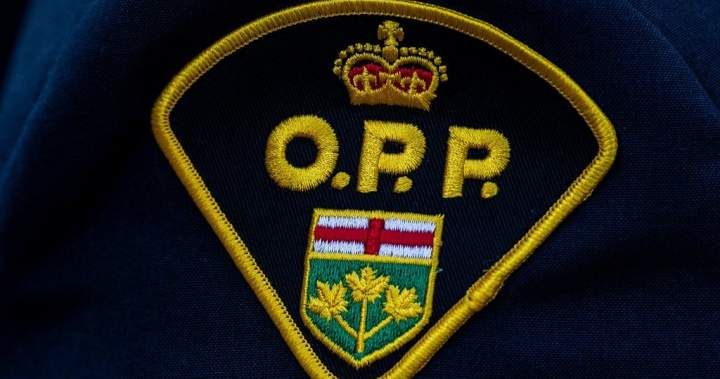Uncategorized
Tenant advocates say Toronto’s new renoviction bylaw already making ‘positive impact’ – Toronto

A new bylaw aimed at reducing renovictions in Toronto is already having noticeable effects, according to tenant and anti-poverty advocates, though some say it’s too early to tell if it will be well-enforced.
The Rental Renovation Licence Bylaw was implemented on July 31 and is designed to protect tenants from “bad faith” evictions by their landlords under the guise of a renovation — an increasingly common tactic critics say is used by landlords to evade rent control and increase rent prices.
Toronto landlords must now obtain a licence from the city before carrying out repairs or renovations that force tenants to move out, and must apply for this licence within seven days of giving a notice of ending tenancy — known as an N13 notice — to the renter.
With the new bylaw in effect, some tenant advocates say they are already noticing a difference in landlords’ actions.
“We’re seeing far fewer calls regarding renovictions leading up to the implementation date of July 31, so it’s already had a positive impact in that sense,” said Douglas Kwan, director of advocacy and legal services at the Advocacy Centre for Tenants Ontario.
“We’re going to monitor how that goes for the rest of the year, but we anticipate that we’re going to see a gradual decline with the number of N13s or renoviction calls to our organization and others in Toronto,” Kwan said.
Renovictions have been on the rise in Toronto and the province for the past decade, and became a “massive” issue in the last five or so years, said Alejandra Ruiz Vargas, president of ACORN Canada.
Since 2017, there has been a nearly 50 per cent increase in the number of N13 notices filed in Toronto, according to a 2024 renoviction report by ACORN.

Get daily National news
Get the day’s top news, political, economic, and current affairs headlines, delivered to your inbox once a day.
“I know a couple that has been renovicted three times last year,” Ruiz Vargas said, adding that the bylaw’s implementation is a “huge win” for renters.
People in lower-cost rentals are commonly targeted by renovictions, and they face immense difficulties in finding places they can afford to move into after being evicted, anti-poverty advocates say.
“The huge increase in evictions has fuelled a massive increase in homelessness in Ontario,” said Jeff Schlemmer, executive director of Community Legal Clinic of York Region.
“Thank goodness municipalities are stepping up.”
New Westminster, B.C., was the first municipality to adopt a renoviction bylaw in 2019, with several other municipalities in Ontario, such as Hamilton and London, following in its footsteps.
These bylaws are beneficial not only for renters but the entire housing system in a city as they help preserve affordable housing stock and are a simpler and quicker solution than putting shovels into the ground to build more affordable housing, said Kwan.
“It doesn’t mean that legitimate landlords who have to renovate their units are prevented from doing so. It’s really to capture situations or people who aren’t even considering renovating their unit and it gives them pause,” he said.
There are several requirements under Toronto’s new bylaw that make it especially strong, such as the need for a landlord to have an architect or engineer confirm that the unit must be empty for the renovation work, and the requirement for the landlord to make rent gap payments if the tenant has to move elsewhere and pay higher rent, said Kwan.
“The rent gap payments ensure that a landlord mitigates the work. In other words, they don’t sit on their hands,” said Kwan.
Though the bylaw does not apply retroactively to tenants who have already received N13 notices, advocates say it strengthens their fight as it puts the burden on landlords to prove their renovations require vacant units.
The City of Toronto says on their website that they will use an “education-first approach” to encourage compliance, with enforcement action to follow when appropriate.
According to the bylaw, landlords could face fines of up to $100,000 if they force a tenant to leave and re-rent the unit to someone else for financial benefits, or if they fail to comply with other aspects of the new licensing requirements.
“The fines are quite high and I think they might be sufficient disincentive for these corporate landlords from acting,” Kwan said.
“I think if there is a concern, it would be uneducated, smaller landlords who perhaps unknowingly or knowingly are just trying to take the risk of renovicting their tenant. That’s probably the group of landlords that should be more of a concern than the larger corporate ones.”
Chiara Paravani, co-chair of York South-Weston Tenant Union, said she is aware of several landlords who are particularly “aggressive” in pursuing renovictions.
The particularly relentless actors may be willing to take a financial hit, Paravani said.
“Absorbing those fines is just part of the cost of doing business in terms of evicting people and replacing them with higher paying tenants, she said, adding that provincial fines were already in place and didn’t do much to change landlords’ actions.
The provincial government doubled maximum fine amounts for unlawful evictions in 2020, setting the fine rates at $50,000 for individuals and $250,000 for corporations.
But the Ministry of Housing was “vastly overwhelmed” with requests to enforce the violations, said Schlemmer, from the community legal clinic.
“You can make the penalty capital punishment, but if the person knows they’re not gonna get caught, they’re still gonna try it, which is what we have for renovictions,” Schlemmer said, stressing the importance of enforcement.
“I really hope that the City of Toronto does allocate meaningful resources to enforcement, because if they do, they could make a real dent in these unlawful evictions and significantly reduce the ongoing increase in homelessness.”
Uncategorized
Ford government confirms $1B emergency loan plan for tariff-hit industries

The Ford government has officially launched a $1 billion emergency tariff response program, offering companies in sectors hit by the U.S.-Canada trade war with loans of up to $40 million.
On Wednesday morning, Finance Minister Peter Bethlenfalvy and Vic Fedeli, the trade minister, unveiled the first major pillar of the government’s response to tariffs on steel, aluminum and autos from U.S. President Donald Trump.
“This new program will provide companies in the steel, aluminum and auto sectors – some of the hardest hit by U.S. tariffs — with up to $1 billion in funding support,” Bethlenfalvy explained.
“And will provide some much-needed relief for Ontario businesses who are facing working capital challenges as a result of tariffs, including payroll, lease and utility payments.”
The $1 billion confirmed Wednesday is part of a $5 billion pot announced by the Ford government during February’s snap election and confirmed in the budget that followed.
When it was announced, the government’s financial blueprint explained that the Protecting Ontario Account was designed to work together with tariff measures introduced by the federal government.

Get daily National news
Get the day’s top news, political, economic, and current affairs headlines, delivered to your inbox once a day.
It would include “up to $1 billion in immediate liquidity relief aimed at protecting Ontario businesses and workers facing significant tariff-related business disruptions,” the budget said.
Officials described it as “an emergency backstop for Ontario businesses that have exhausted available funding.”
Details of the remaining $4 billion have not yet been announced.
Despite announcing the fund as part of its budget in May, the $1 billion loan program is not officially up and running. Bethlenfalvy said it would be “days and weeks” rather than months before it is available to businesses.
Loans will be available ranging from $250,000 to $40 million and are only available to businesses in tariff-hit sectors like steel companies.
United States President Donald Trump has had levies in place for some time on Canadian steel and aluminum, also adding 35 per cent tariffs on all goods not covered by a trade deal between the two countries at the beginning of August.
Opposition politicians previously said the Ford government was taking too long to stimulate the economy.
“Our economy is already taking a big hit with Trump’s most recent tariff hike on all Canadian goods to 35 per cent,” NDP MPP Catherine Fife said in a statement.
“Despite growing economic uncertainty and ongoing job losses, we still don’t have a plan from the Premier to protect workers and create good jobs. In order to weather this ‘Trump Storm,’ we must strategically invest in our auto sector and fight to keep these good, stable jobs in Ontario.”
© 2025 Global News, a division of Corus Entertainment Inc.
Uncategorized
Chance of rain in Kawartha Lakes as crews fight 3 active wildfires

Environment Canada is forecasting a chance of rain for Kawartha Lakes Wednesday morning as emergency crews continue to fight three active wildfires in the region.
As of 5 a.m. Wednesday, Environment Canada is forecasting mainly clouding skies with a 40 per cent chance of showers and risk of a thunderstorm. The skies will clear this afternoon, the agency added, and temperatures will reach a high of 28 degrees.
Ontario’s forest fire info map currently shows three active wildfires blazing in the region, with the forest fire danger ratings listed as low.

Get breaking National news
For news impacting Canada and around the world, sign up for breaking news alerts delivered directly to you when they happen.
Of the three fires, the Ministry of Natural Resources and Forestry said Tuesday the largest fire, OFR 1, had consumed approximately 33.5 hectares of forest near Burnt River. Meanwhile, the Haliburton 18 fire burned through 27 hectares of forest, it added.
The third fire, the Kirkfield fire, had consumed five hectares and began on Aug. 11.

There were no evacuation orders in place, but residents were being asked to remain alert.
“There is a total fire ban in effect across the city of Kawartha Lakes and we will be policing that,” Mayor Doug Elmslie said Tuesday.
“If you see smoke, report it immediately to Kawartha Lake’s fire rescue.”
— with files from Prisha Dev
© 2025 Global News, a division of Corus Entertainment Inc.
Uncategorized
Police arrest neighbour after family dog shot in Ontario’s Peterborough County

Ontario Provincial Police say they have arrested and charged a 67-year-old man after his neighbours’ dog was shot in Peterborough County.
Police say they were called to the scene Sunday morning after the dog owners said their pet had been missing for about a week.

Get daily National news
Get the day’s top news, political, economic, and current affairs headlines, delivered to your inbox once a day.
OPP say the family heard gunshots around the time the dog went missing.
They say the family was led to believe their dog had been shot and killed by their neighbour.
After speaking with all parties involved, police say they charged the neighbour with killing or injuring animals.
Police say he is expected to appear in court in September.
© 2025 The Canadian Press
-

 Uncategorized2 months ago
Uncategorized2 months agoAccording to Dior Couture, this taboo fashion accessory is back
-

 Uncategorized2 months ago
Uncategorized2 months agoThese ’90s fashion trends are making a comeback in 2017
-

 Uncategorized2 months ago
Uncategorized2 months agoThe old and New Edition cast comes together to perform
-

 Uncategorized2 months ago
Uncategorized2 months agoUber and Lyft are finally available in all of New York State
-

 Uncategorized2 months ago
Uncategorized2 months agoNew Season 8 Walking Dead trailer flashes forward in time
-

 Uncategorized2 months ago
Uncategorized2 months agoMeet Superman’s grandfather in new trailer for Krypton
-

 Uncategorized2 months ago
Uncategorized2 months ago6 Stunning new co-working spaces around the globe
-

 Uncategorized2 months ago
Uncategorized2 months agoThe final 6 ‘Game of Thrones’ episodes might feel like a full season








